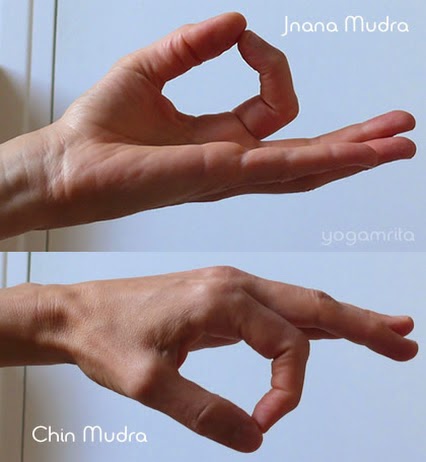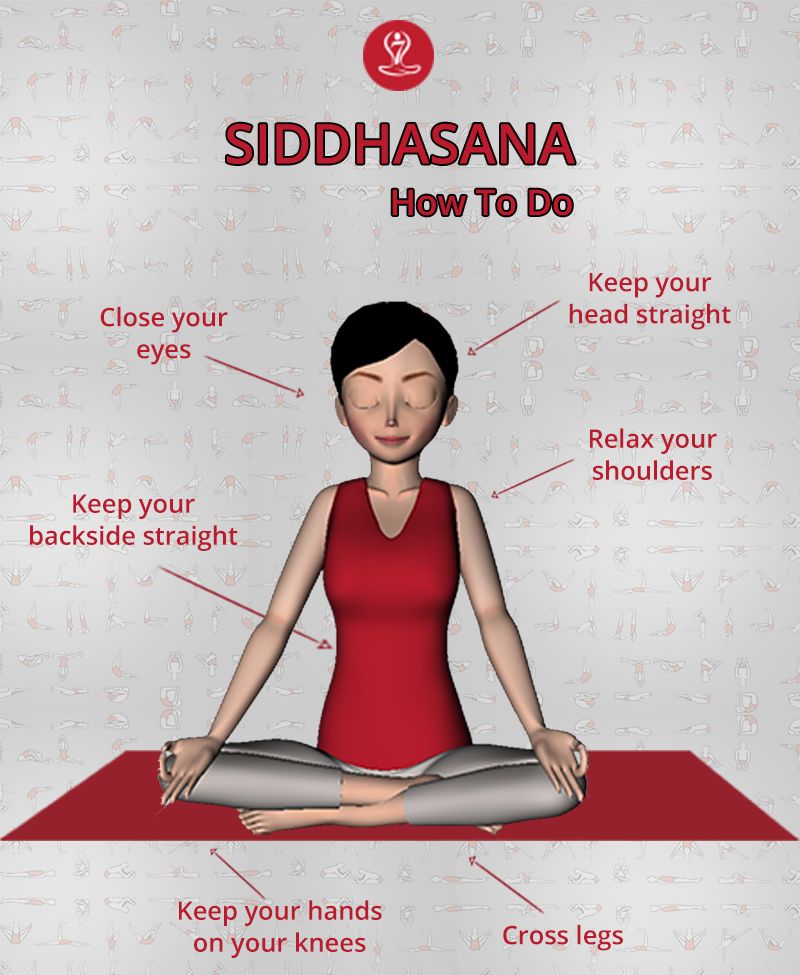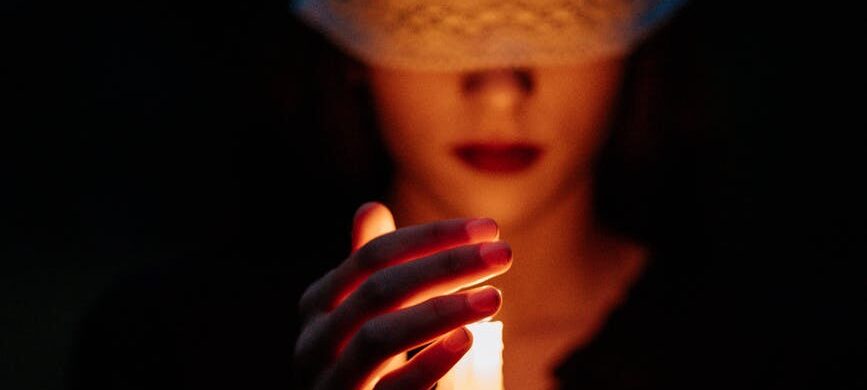Trataka Kriya Practice is of two types:
- Bahir Trataka (External Concentrated Gazing)
- Antir Trataka (Internal Concentrated Gazing)
In the previous article on Trataka, we elaborated on the meaning and concept behind this technique. Now, we will focus on benefits and how to perform the practice. Also, keeping in mind its nuances and precautions.
Benefits
"By using this practice, Shambhavi is sure to arise. Diseases of the eye disappear; one gets divine sight” [3]. – The Gheranda Samhita, ch. 2, v.52
“Trataka removes eye diseases. It is a closed-door to lethargy and so on. Strive to keep it secret — as if it were a gold box” [2]
– Hatha Yoga Pradipika, ch. 2, v.32
As seen from the original writings in Hatha Yoga Pradipika and Gheranda Samhita, Trataka is said to help in curing –
- Eye Diseases [2], [3]
- Lethargy [2]
- Fatigue and Sloth (Laziness) [2]
Important Note
Trataka Kriya practice is performed using a candle flame as the object of concentration. Though one can use other objects like yantra or symbols, the candle is preferred for beginners. The reason for this is that other complex geometries like Yantra needs an expert who understands its design and how it affects the different centers of the brain.
1st Technique : Bahir Trataka (External Trataka)


- Start the practice in a dark room. This makes it easier to focus on the flame. Also, ensure the room is clean so that any distractions around are eliminated and the body remains calm and relaxed during the practice.
- Place the candle 2 to 3 feet in front of you with the flame at your eye level. The flame should not flicker.
- It is vital that you sit in a pose where your spine is straight and not drooping or reclining. Wrong posture might cause imbalance in energies and lead to unwarranted side-effects from the practice. The preferred posture is siddhasana or siddha yoni asana. The hands should be placed on the knees either in jnana or chin mudra.
- Before beginning to concentrate, close your eyes and take a few deep breaths so that you can relax your body.
- Feel calm and relaxed and be prepared to maintain your body perfectly still throughout the practice.
- Perform kaya sthaiyram (steadiness of the body) for a few minutes if the body feels restless.
- Open your eyes and gaze at the middle portion of the candle flame that lies just above the wick.
- Try to keep your eyes steady without blinking. Lower the eyelids a little if they feel sore or strained.
- Stare as long as possible, 1 to 2 minutes for a beginner, 5 to 10 minutes for an intermediate practitioner. You might blink, once or twice it is alright. As you cultivate the practice frequency of blinking will reduce.
- Try to keep your mind void of any thoughts. If thoughts arise, let them go gently and bring your attention back to the flame.
- Remain a silent witness (sakshi) throughout this whole practice.
- When you close your eyes (after 1 to 2 min for a beginner) try to focus on the impression of the flame formed in front in your mind, also called the chidakasha “space of consciousness” or “inner space.”
- If the flame’s impression moves to the left or right, then try to bring it back to the center. Continue focusing on this inner impression until the impression disappears.
- As you gain experience, you will be able to steady the image formed, and hold it in your mind’s eye for a long time.
- Resume the practice of staring at the flame.
- If the eyes feel too strained during the practice, imagine you are breathing through the mid-eyebrow center. When you close your eyes, again continue to feel that you are breathing in and out through the mid-eyebrow center. This visualization helps in relaxing the eyes.
Your overall practice session should not be more than 15 to 20 minutes unless advised otherwise by the practitioner.
Using Mantra as aid
If you are finding it difficult to control your thoughts during the trataka kriya practice, i.e., you are getting too distracted and unable to focus on the flame, you can repeat a mantra (e.g. OM, Aim, or Gayatri Mantra) while doing the practice. Pick a mantra you feel comfortable with.
2nd Technique : Antir Trataka (Internal Trataka)
- The initial preparatory steps are the same as for external Trataka.
- Keep your eyes closed during the practice and concentrate on a symbol (read complete list of objects). A guru or teacher might provide a symbol for you.
- If you have no symbol, or just started practicing, then try to visualize the following things:
- A point of light, for e.g. That from a twinkling star
- A crescent moon
- A full moon
- Try to avoid more complex shapes in the beginning as they are difficult to visualize
- As you visualize this point of light, initially you might struggle to fully visualize as it may waver or disappear. With time it becomes fully developed and steady.
Practice this for 5 minutes (beginner) up to 20 minutes (intermediate). Avoid any longer without an expert/teacher’s guidance. This practice is more difficult than external trataka and takes a long time to cultivate and do it efficiently.
Though with the help of a teacher/expert learning this can be made quicker.
Precautions
- The practice is more effective on an empty stomach and not to be performed just before bedtime.
- Trataka produces heat in the body. Therefore, it should not be performed for long hours without an expert’s supervision. An expert would balance the heating effects of trataka by suggesting grounding meditation exercises to cool the body.
- Don’t focus too hard or strain yourself while concentrating. Always remain calm and relaxed and listen to your body. If you are facing headaches or body pains after the practice that are severe, stop the practice immediately and seek an expert’s guidance.
- Always start any yoga practice for the least interval of time and gradually increase.
- Posture should be such that the back/spine is always straight. No compromise can be made with this basic rule for trataka.
References
- Book: Hatha Yoga Pradipika: Light On Hatha Yoga, by Swami Mukti Bodhananda
- Book: The Hatha Yoga Pradipika (Translated), Svatmarama (Author), Brian Dana Akers (Translator)
- Book: The Gheranda Samhita (Translated) by James Mallinson (Translator)

6 thoughts on “Trataka Kriya – Benefits, Techniques & Precautions”